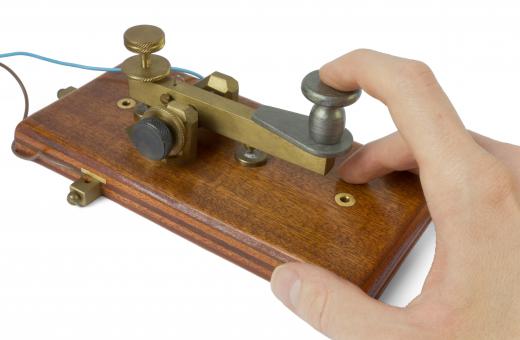Voltage relays are electrical devices in which the primary function is the switching of current from one circuit to another. The use of a relay makes it possible to control a large amount of current with a small amount of current. The relay is activated remotely using an electrical signal. In some applications, the remote signal might be pneumatic.
Voltage relays can be found in a broad range of applications. One of the most common, and earliest, uses is in the switching exchanges of the telephone and telegraph industry. They also are widely used in automated testing equipment as well as being found in most major appliances and electronics, including computers.

In a typical relay, there is a lever that makes a connection with a contact. When the lever and contact are touching each other, the circuit is said to be closed. When the two components are not touching, the circuit is considered open. When the relay is actuated, the lever is moved from its present position to the other position, from open to close or vice-versa. This action serves to relay power from one circuit to another circuit.
One of the basic uses of these relays is in simple on/off control. An example of this would be in a refrigeration system that runs a compressor. When the compressor comes on, a surge of electrical current is required to initially power it up. The relay is used to redirect, or relay, current to the compressor’s circuit at the appropriate time.
Voltage relays are also used in logic applications. This function is particularly prevalent in equipment used for testing. The voltage relay provides the capability of moving current from one point to another in a defined logical sequence.
The two broadly defined categories of relays are electromechanical and solid state. There are a variety of different styles and types under each classification. Electromechanical relays contain moving, mechanical parts. The action of the relay is actuated by current flowing through a wire coil, which creates a magnetic field to operate the relay. The magnetic force is used to move the contact lever, causing either an open circuit to close or a closed circuit to open.
Solid-state voltage relays use light from light emitting diodes to achieve actuation of the relay. The lack of moving parts makes them more durable than the electromechanical types. Additionally, solid-state relays typically have faster reaction times, making them more efficient.
Another attribute by which relays are characterized is the amount of load, or current, they are capable of handling. In most cases, relays are classified as either low-voltage relays or high-voltage relays. In general, high-voltage relays operate at voltages of more than 5,000 volts. There are, however, applications in which a high-voltage relay is used at a lower rating.
